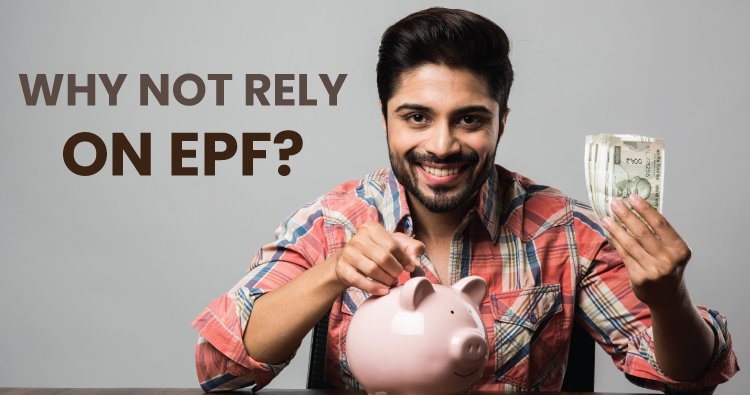


When most people think of retirement, they think of employer benefits like Employee Provident Fund (EPF). While this is a great option, but it is not the only one. You can supplement with other investment options such as mutual funds. This blog will highlight the importance of investing in mutual funds for your retirement.
EPF is a tax-efficient investment instrument and has the backing of the government.
Mutual funds and EPF can help boost your retirement savings and ensure that you don’t run out of your retirement savings.
Here are some reasons you shouldn’t rely entirely on your employer for your retirement benefits:
EPF is primarily a debt-based product:
EPF is primarily a debt-based product. It is essential that you understand that EPFO can invest up to 15% of its incremental flow in equities.
Equity-based instruments have the potential to make real returns on your money. Real return is the return given by the investment option after subtracting the effect of inflation.
You can build a retirement corpus if you invest in options that beat inflation, especially if you start early. You can invest in equity-oriented mutual funds, which involve higher risks than most other investment instruments but offer impressive returns over time.
Minimal investment amount:
In EPF, employees and employers both contribute 12% monthly to EPF. They can contribute up to 12% of Rs.15,000, or Rs.1800. However, if your income exceeds Rs.15,000, the company is not required to contribute 12%. So, regardless of your income, the employer’s contribution may be smaller.
Basically, the overall amount that gets credited to your EPF account may not be sufficient to fund your retirement goals.
You can invest more in your EPF account. This option is called Voluntary Pension Fund (VPF), and it is an extension of EPF.
Previously, VPF investments were tax-free. However, according to Budget 2021, if your EPF and VPF contributions exceed Rs. 2.5 lakh in a financial year, they tax the interest that you earn on such contributions.
Cap on maximum investment amount:
As an employee, you can make tax-free contributions of up to 12% of your basic to EPF. If you want to invest more towards your retirement plan, you can invest in mutual funds. You may choose from a variety of mutual funds depending on your investment objectives and time horizon.
If you invest in mutual funds, there is no cap on the maximum investment amount. Moreover, taxes apply on redemption.
Availability of different investment options:
Mutual funds offer different investment options such as lumpsum and Systematic Investment Plans. It means that you can make investments at any time of the day from anywhere.
A systematic Investment Plan (SIP) is a regular investment plan through which you can invest a predetermined amount at regular intervals. You can also increase or decrease your SIP per your financial conditions. So, mutual funds offer investment flexibility that EPF does not provide.
Conclusion:
The importance of retirement preparation cannot be overstated. It’s possible that relying on EPF isn’t the greatest option. Inflation might deplete your savings faster than you expect, so your retirement fund may not be sufficient to pay your daily expenses. You might use a Systematic Investment Plan (SIP) to invest in mutual funds for retirement income. SIP allows you to invest a set amount at regular intervals. It’s completely optional, and you may increase, decrease, or stop your SIP investments at any time. As a result, you may develop a retirement plan and invest to meet your retirement objectives.
This blog is purely for educational purposes and not to be treated as personal advice. Mutual fund investments are subject to market risks, read all scheme-related documents carefully.
At Conquer Investment, we truly care about our clients' goals - and we believe it shows in our attention to detail and service.
Mumbai, Maharashtra
+91 8850708626 / +91 9004484892
Copyright © Conquer Investment 2021. All rights reserved.